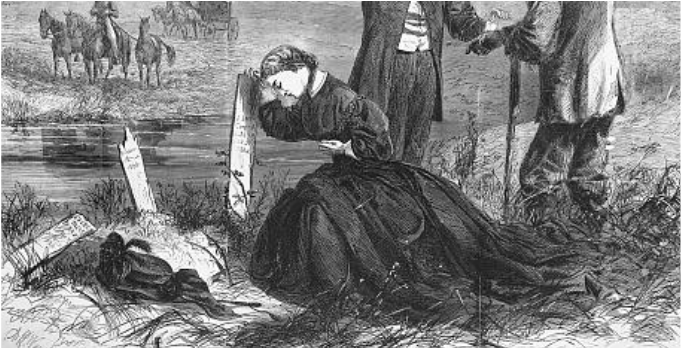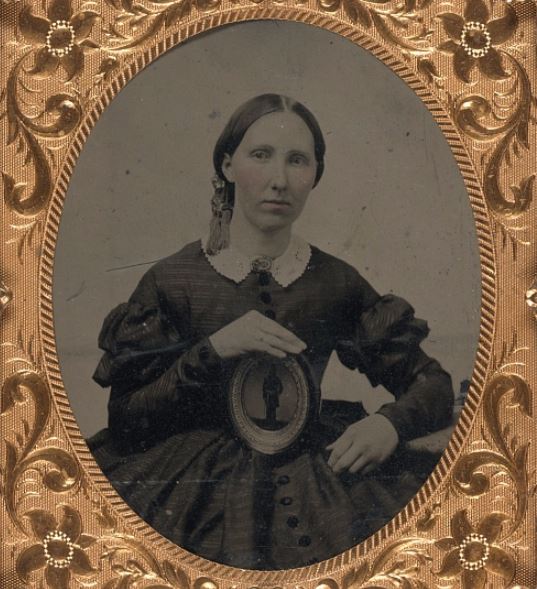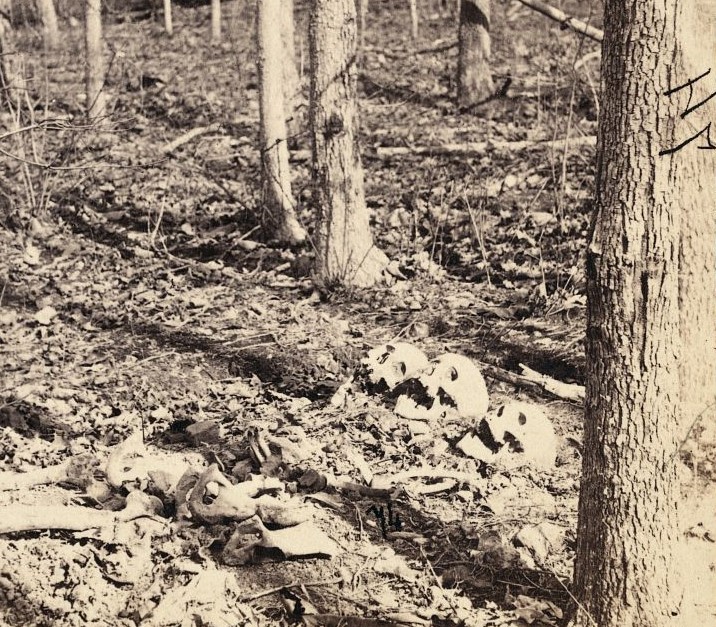|
The second in a five-part series of All Saints' Day celebrations in New Orleans history. Need we say whose graves they were? Need we say whose fair hands placed those mementoes there, or whose kind hearts prompted the deed? On April 9, 1865, Confederate General Robert E. Lee surrendered to General Ulysses S. Grant at Appomattox Courthouse, ending the Civil War. In New Orleans, infrastructure and economy lay in ruin. By November, the observance of All Saints’ Day was fundamentally changed from antebellum celebrations – in fact, the way all Americans interacted with death had changed forever. In general, nineteenth century Western culture was marked by an intimacy with death that would be incomprehensible to most modern-day people. Understanding that death could be swift and sudden, each person hoped only for a “good death” – one in which last words could be uttered, surrounded by loved ones. This ideal was sought even among soldiers, who kept letters in their pockets in case of their death, or who wrote such letters for dying friends. Yet the horrific realities of war – and the bad death that was its companion – were unavoidable. Advances in technology led to extensive photographs of Civil War battlefields, exposing civilians to the carnage of the conflict, and “stripping away much of the Victorian-era romance around warfare.”
The destruction of the Southern economy in 1865 and 1866 is unlike anything any Americans ever experienced at any other time, at least on our home soil. The writers from Northern newspapers and magazines who went South after the war end up observing open coffins laying all over the place at cemeteries. They end up seeing old men and former slaves going around collecting bones because they could get a dollar for so many pounds of bones off battlefields. Those are the bones of men who died -- without a name, a place, they were never sent back to their families. This is what people would see if they went to those battlefields in 1865 and 1866 -- and for that matter for many years afterward. Most of the Civil War cemetery monuments we know today – the Confederate Army of the Tennessee and Army of Northern Virginia monuments, the Confederate monument at Greenwood Cemetery, the Grand Army of the Republic monument at Chalmette National Cemetery – were not erected until the 1870s and 1880s. In the years between Appomattox and the first official Memorial Day in 1868, efforts by Clara Barton and others to identify and re-locate fallen soldiers on both sides of the conflict resulted in the disinterment and reburial of thousands in New Orleans alone. However, this process would take years. On November 1, 1865, a great many of those who would come home were not yet located or reburied. Documents state that it was a beautiful Wednesday of extremely pleasant weather. Among the notable architecture newspapers chose to highlight in this year were the tomb of the New Lusitanos Benevolent Association and the tomb of W.W.S. Bliss, both located in now-demolished Girod Street Cemetery. They also noted the then-burial site of Albert Sidney Johnston in St. Louis Cemetery No. 1. General Johnston was later re-interred in Texas: Several soldiers in tattered gray stood around. “You served under him,” we remarked to one, as we looked at him. Tears started in his eyes as he merely said, “yes,” and pulled a twig from a cedar circlet, hanging on the grave, and handed it to us. Other articles point out the noticeable presence of many more male attendees to ceremonies than in years past. Yet the focus of the holiday in 1865 seemed to be on the women – mothers and spouses who mourned lost soldiers. The Lusitanos tomb is described as attended by wailing women. In another account, women tend to the simple wooden monuments that temporarily marked their loved ones’ resting places: …we came upon a number of graves, very plain and unpretending, with but a wooden foot and head board… Not one was left undecorated – not a single one without a flower, a bouquet, or a wreath to mark that some kind, gentle, amiable feminine heart had stood there to tender a memento to departed valor. Need we say whose graves they were? Need we say whose fair hands placed those mementoes there, or whose kind hearts prompted the deed? They were the same heroic women of our city who, with noiseless step and sad, earnest eye, have treaded the avenues of the hospitals during the last four years, in search of the wounded and dying soldiers… Ten of them had assembled under a lofty oak… and spent almost the entire day in preparing wreaths and decorating those humble graves. Sources:
PBS American Experience: Death and the Civil War “The City,” Daily Picayune, November 2, 1862, 1. Army of Northern Virginia tomb erected 1881; Army of the Tennessee tumulus erected 1887; Confederate Monument at Greenwood Cemetery, remains relocated 1868, monument erected 1872; Grand Army of the Republic monument completed 1883. “The City,” Daily Picayune, November 1, 1865, 2. “All Saints’ Day,” Daily Picayune, November 2, 1865, 1. Daily Picayune, November 5, 1865, 1.
1 Comment
|
About the Author:Emily Ford owns and operates Oak and Laurel Cemetery Preservation, LLC. Archives
November 2019
Categories
All
|
- About
-
Restoration
- Services
-
Portfolio
>
- Turning Angel Statue, Natchez, MS
- Ledger Monument, Baton Rouge, LA
- Pyramid Statuary, New Orleans, LA
- Bronze and Granite Monument, Carville, LA
- Box Tomb, New Orleans, LA
- Vernacular Concrete Monument, Pensacola, FL
- 1830s Family Tomb, Covington, LA
- 1850s Family Tomb, New Orleans, LA
- 1880s Family Tomb, New Orleans, LA
- Headstone and Monument Restorations, Pensacola, FL
- Society Tomb, New Orleans, LA
- Education
- Blog
- Contact
|
Oak and Laurel Cemetery Preservation, LLC is a preservation contractor in New Orleans, Louisiana, specializing in historic cemeteries, stone conservation, educational workshops and lectures. Oak and Laurel serves the region of the Southeastern US.
|
QUICK LINKS |
CONNECT |
Proudly powered by Weebly








